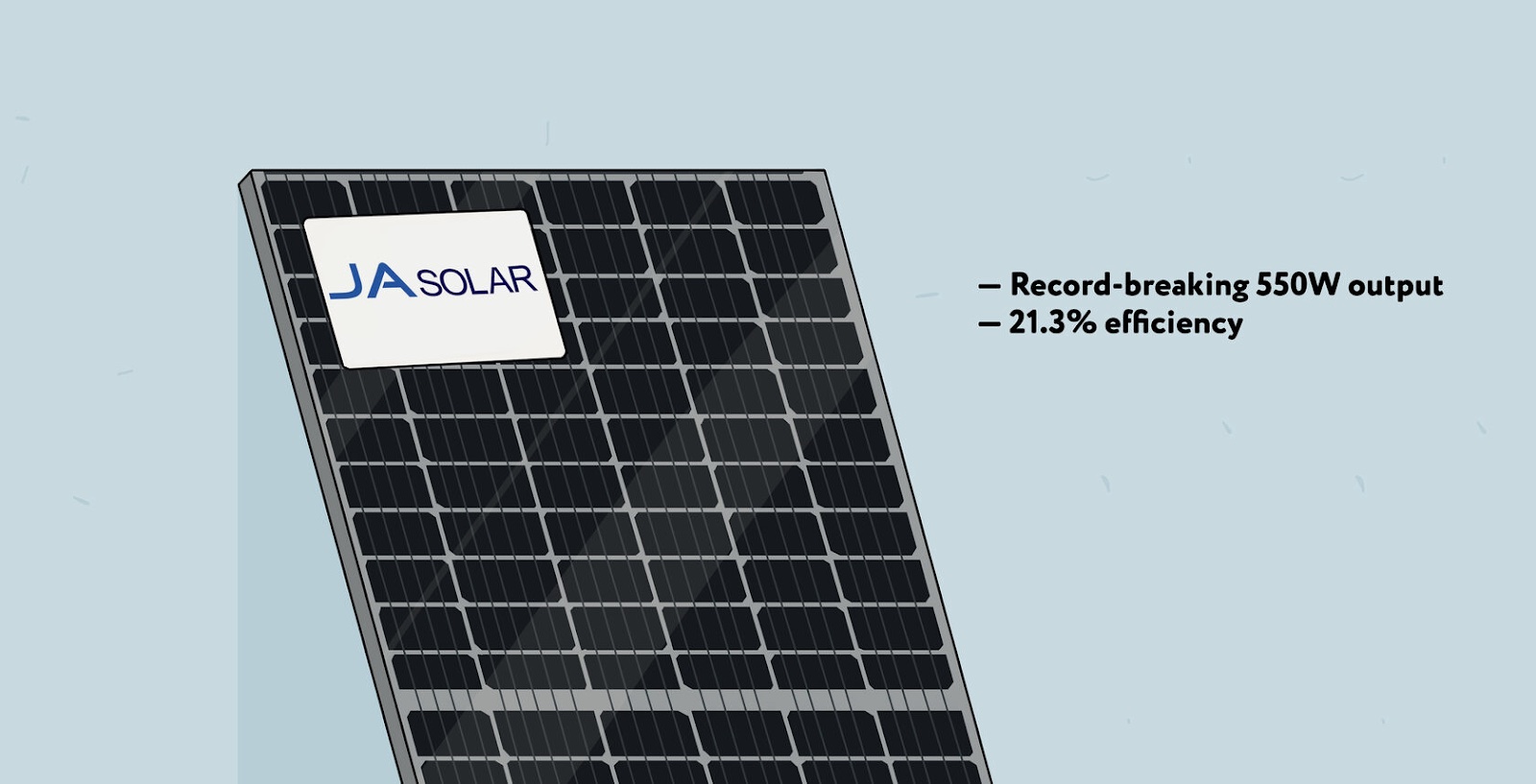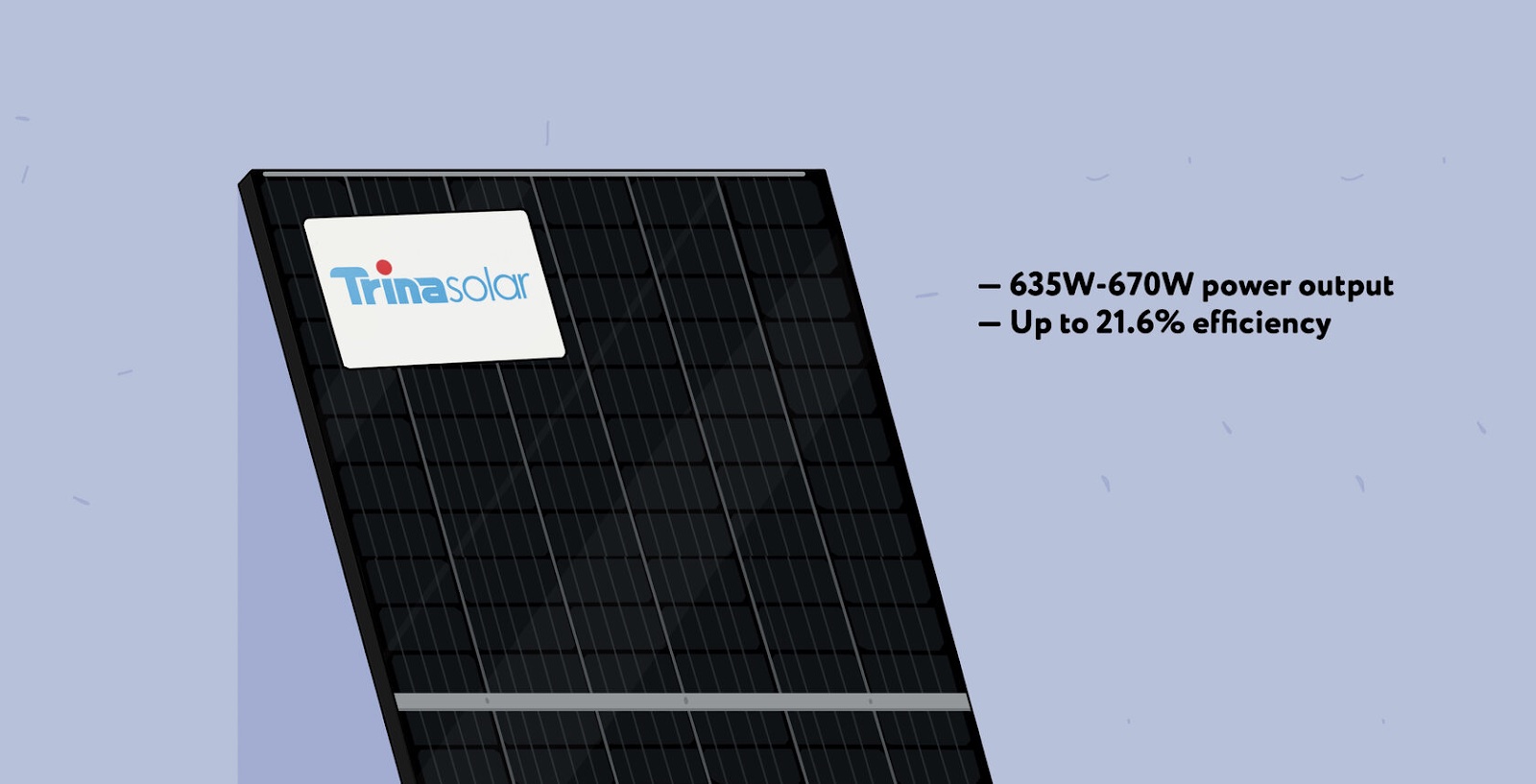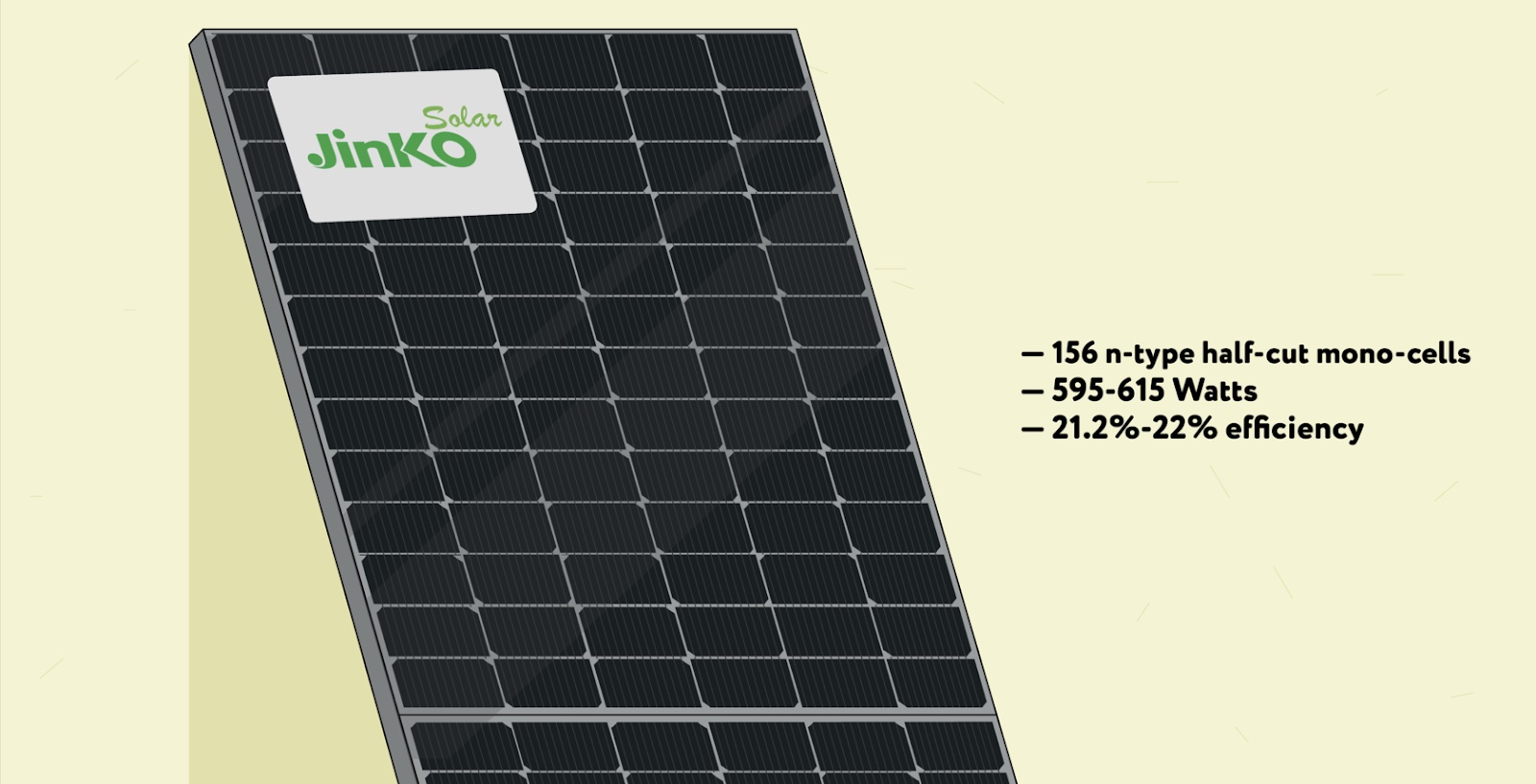Photovoltaic systems are the future of our energy. They grow faster than ever and are cheaper than ever as well. If you’re looking to build a large solar system, we’ll introduce you to a few industrial solar panels that you might want to choose for your project.
What are solar panels?
Solar panels are devices that convert the energy from the sun into electrical energy. They are made up of multiple solar cells that are typically made from silicon, and each cell contains a layer of negatively-charged electrons and a layer of positively-charged holes.
When sunlight strikes the solar cells, it excites the electrons in the silicon and causes them to move from the negatively-charged layer to the positively-charged layer, generating an electric current. This electric current can then be collected and used to power electrical devices or stored in a battery for later use.
Solar panels are often used to generate electricity in off-grid locations or to supplement the electricity from the power grid in homes and businesses. They are a renewable source of energy and can help to reduce reliance on fossil fuels, making them an important part of efforts to combat climate change. Large solar installations for industrial and business projects are also getting popular in the US in particular.
What is the difference between industrial solar panels and PV modules for the home?
The primary difference between solar panels for home and industrial solar panels is their size and power output.
Solar panels for home use are typically smaller and have a lower power output than industrial solar panels. They are designed to be installed on residential rooftops or in small-scale ground installations to generate enough electricity to meet the needs of a typical household. These solar panels usually have a power output of 300 to 400 watts per panel.
On the other hand, industrial solar panels are larger and have a higher power output than residential solar panels. They are used in large-scale installations such as solar power plants and are designed to generate a significant amount of electricity to power industrial operations. Industrial solar panels can have a power output of 500 watts to 700 watts per panel or even higher.
In addition to size and power output, the installation and maintenance requirements also differ between residential and industrial solar panels. Industrial solar panels require more complex installation and maintenance processes due to their larger size and higher voltage output.
Overall, while the basic principles of solar panels are the same regardless of their application, the size, power output, and installation and maintenance requirements vary depending on their intended use in residential or industrial settings.
5 Best industrial solar panels in 2023
What panels are good for building large projects, such as commercial and industrial solar installation, and solar farms? Here is the list of worthy contestants.
JAM72S30/MR 550 W from JA Solar

A 144-cell 550 W panel from JA Solar is fantastic for commercial and utility-scale installations. The module shows impressive 21.3% efficiency. Three bypass diodes and a half-cut design decrease the impact of shading. The panel withstands 5400 PA of front load. Busbars and half-cut cells improve the longevity of a panel and the flow of current flow inside a panel. It is designed to last for over 25 years and comes with a 12-year warranty for the product and a 25-year warranty for performance.
Trina Solar Vertex 670 W

Vertex solar panel from Chinese brand Trina Solar provides up to 670 W power output with up to 21.6% efficiency. It’s a great industrial solar panel. It features multi-busbar technology and improved PID and microcracks protection. The low cost of a panel guarantees a better return on investments.
Jinko Solar Tiger Neo 615 W

Tiger Neo is a panel from Jinko Solar that reaches 615 W power output in Standard Test Conditions. The efficiency of this module goes as high as 22%. The panel has 156 half-cut n-type cells and it’s particularly large: 97 × 44.6 inches. It is best suited for commercial and solar panels industrial installations. Tiger Neo comes with 12/30 years warranties for product and output. The panel retains over 87.4% of its production by the year 30.
Phono Solar Helios 690 W Module

Helios is a bifacial panel by Phono Solar, another Chinese brand. It is designed primarily for building a system of a large scope. The most powerful panel in this line is rated at 690 W DC output for the front side. Active rear side provides up to 25% bonus production. Taking bifacial gain into account, you could get up to 828 watts from a single panel.
Suntech 555 W Ultra V

A monofacial panel Ultra V from Suntech is a great commercial solar panel for business and industrial installations. Ultra V provides up to 555 watts of output with a 21.5% efficiency. It shows improved production on cloudy days and doesn’t heat up as much while operating. After 25 years this panel retains over 84.8% of its initial power. There is also a bifacial variation of this model.
What are the types of solar panels?
There are several different types of solar panels available, each with its own unique design and advantages. Some of the most common types of solar panels include:
- Monocrystalline solar panels: These are made from a single crystal of silicon and have a high-efficiency rating. They are typically more expensive than other types of solar panels but also have a longer lifespan.
- Polycrystalline solar panels: These are made from multiple crystals of silicon and are less expensive than monocrystalline panels. They have a lower efficiency rating but are still a popular choice for residential and commercial installations.
- Thin-film solar panels: These are made by depositing a thin layer of photovoltaic material onto a substrate such as glass, metal, or plastic. They are lightweight and flexible, making them ideal for certain applications such as portable solar panels or curved surfaces.
- Concentrated solar panels: These use lenses or mirrors to concentrate sunlight onto a small area of photovoltaic material, resulting in a higher efficiency rating than other types of solar panels. They are typically used in large-scale installations such as solar power plants.
- BIPV solar panels: These are Building Integrated Photovoltaic solar panels that are designed to replace conventional building materials such as roofing tiles or glass facades. They offer both functional and aesthetic benefits, making them an increasingly popular choice in modern architecture.
While not a separate type, bifacial panels also deserve a mention. They’ve been a popular choice for commercial installation in the US lately. A bifacial panel has an active rear side which can provide up to 25% bonus to the production of a front side.
Each type of solar panel has its own unique advantages and disadvantages, and the choice of which to use will depend on various factors such as the installation location, available space, and budget.
The average cost of industrial solar panels
While at the first glance, industrial solar panels seem a bit more expensive than your typical home solar panels, their actual price per watt is lower. At the beginning of 2023, the average cost of home solar panels varies around $0.7-$0.9 per watt whereas the cost of commercial solar panels might be slightly lower: $0.6-$0.8 per watt before installation services. A lot depends on the manufacturer of your solar panels. The cheapest panels come from China. Take a look at panels from Jinko Solar, JA Solar, Trina Solar, and LONGi Solar. It doesn’t make sense to go for posh panels from brands like Panasonic or REC if you need a large-scale system.
Recently, bifacial solar panels have become especially popular for industrial installation in the US. A system made out of bifacial panels is 5% more expensive on average than an installation made of standard monofacial panels but it offers 6-10% more production.
Interesting Related Article: “Investing in solar panels: is it worth it?“


